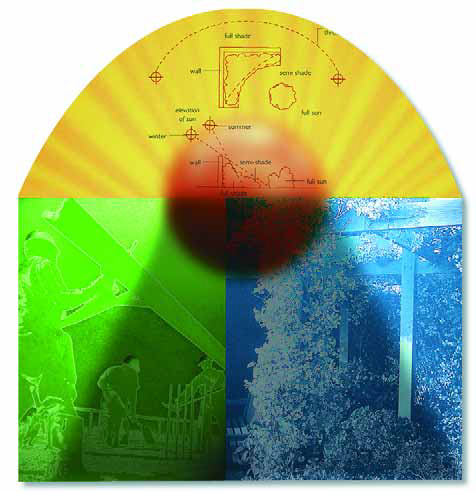technique
As modern building materials have been developed, we humans have been remarkably proficient at applying them in ways that go well beyond the vision of their inventors. Such is the case with roofing membranes, which now are widely used as liners for backyard streams and ponds. It's understandable that landscape designers and contractors have taken to these rubber liners. After all, they make pond and stream construction inexpensive and easy. But from the perspective of the Japanese gardener or quality watershaper, convenience and affordability alone do not qualify a material for use. Instead, standards of durability and enduring
Whether it's done using only a tape measure and a pair of experienced eyeballs or requires the help of satellites orbiting the planet, every construction project is surveyed before the work begins. In fact, surveyors have been plying their trade for thousands of years, and their services have been valued for one simple reason: It's really a good idea to measure the size and shape of the ground before you try to build on it. In today's terms, surveying is defined as the process of taking accurate measurements of the land on the X-, Y- and Z axes (that is, in three dimensions) and then translating that data into a usable (usually printed) format. There are several different surveying methods used to measure, process and communicate this critical information, and choosing the right one is essential to getting any watershaping project off to a sound start. So how do you determine the level of detail required and communicate your need to the surveyor so he or she can give you the appropriate level of information? Let's take a look at the different types of surveys in common use and review what those options mean in terms of creating a truly useful array of
I truly enjoy including shade structures in my designs. Whether I'm working with an overhang, an arbor, a loggia, a pergola or some other structure (and, yes, they are all different), I see them as ways to create visual extensions of a house - and wonderful places to enjoy being next to the water. There is, of course, as much art and skill to designing and installing the right shade structure as there is to setting up all of the other features of a great backyard. Done well, a structure that projects out from a house will pull your eye from inside to outside while it provides relief from the sun. Similarly, freestanding shade structures
It's a simple fact: No matter where you are on the globe, ultimately it's dark exactly half the time. So no matter how beautiful your watershapes may be, if you don't fully consider lighting as a key component of your projects, you may be robbing your work of half its potential for pleasing your clients. That makes it a bottom-line issue, because lighting adds real value to most any watershape installation with a long list of benefits. For starters, it extends the time a watershape can be used beyond daylight hours. It also adds
As a former shotcrete builder myself, I believe you can't find a better method of building a pool, spa, pond or waterfeature of any type than by using pneumatically placed concrete, or "shotcrete." The method and the material offer the designer and builder great and often incredible design flexibility, and the resulting watershapes will last several lifetimes. Given that the vast majority of watershapers around the world depend on shotcrete as their primary construction material, it only makes sense that we should know as much as possible about putting this amazing product to its best possible use. Unfortunately, however, that's not always the case. There's little argument that the process of shotcrete construction is laborious and demanding, that it requires a major logistical and physical effort and that fairly precise timing is necessary. For all the focus it takes to apply it and shape it just so, however, I have observed a couple of critical steps many builders overlook in the press of getting the job done - the most important of them being the proper curing of the


















